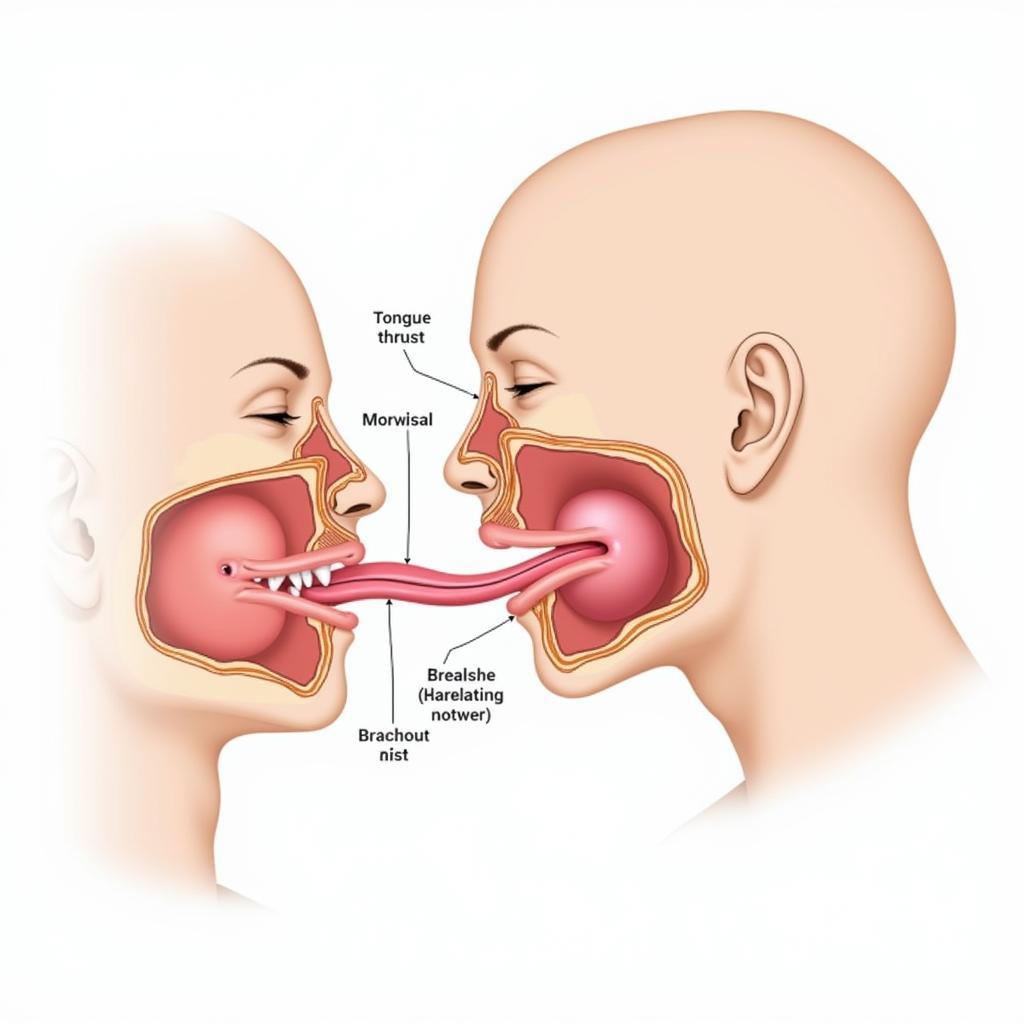Tongue Thrust: What Football Players Need to Know
November 12, 2024Tongue thrust, or reverse swallow, is a condition where the tongue pushes forward against the teeth when swallowing. This seemingly simple action can have surprising implications, even for athletes like myself. While it might not be the first thing that comes to mind when discussing football performance, tongue thrust can impact breathing, speech, and even dental health, factors that can indirectly affect a player’s overall well-being and potentially their game.
Understanding Tongue Thrust and its Effects
Tongue thrust is often developed in childhood and can sometimes persist into adulthood. It can be caused by various factors including thumb sucking, prolonged bottle feeding, allergies, and enlarged tonsils or adenoids. The constant pressure from the tongue against the teeth can lead to misalignment, affecting bite and potentially impacting facial structure. For a football player, this could mean discomfort when wearing a mouthguard or even difficulties with clear communication on the field.
While not directly impacting on-field performance like a hamstring injury, tongue thrust can influence breathing patterns. Proper breathing is crucial for stamina and endurance, essential components for any footballer. If the tongue rests in a forward position, it can obstruct the airway, leading to mouth breathing. This can reduce oxygen intake and potentially lead to fatigue more quickly.
 Tongue Thrust Impact on Breathing in Football Players
Tongue Thrust Impact on Breathing in Football Players
How Tongue Thrust Can Affect Football Players
Imagine running down the pitch, needing to call out to a teammate for a pass. If your speech is affected by tongue thrust, that crucial communication could be unclear. It may seem minor, but in the fast-paced environment of a football match, clear communication is paramount. Furthermore, the potential dental issues caused by tongue thrust could also be a concern. Misaligned teeth are more susceptible to damage, which is a risk in a contact sport like football.
Addressing Tongue Thrust: Myofunctional Therapy and Other Solutions
Fortunately, tongue thrust can be addressed through myofunctional therapy. This involves exercises and techniques designed to retrain the muscles of the tongue and mouth to promote proper swallowing and resting tongue posture. This can help improve breathing, speech, and even help correct minor teeth misalignments. Other solutions might include orthodontic treatment or appliances designed to guide the tongue into the correct position. For any football player concerned about tongue thrust, consulting with a qualified speech therapist or orthodontist is crucial.
Conclusion: Don’t Let Tongue Thrust Hold You Back
While tongue thrust might not be a headline-grabbing injury like a torn ACL, it’s a condition that can have subtle yet important implications for athletes, including football players. Addressing tongue thrust through appropriate therapies can help optimize breathing, improve communication, and protect dental health. So, if you suspect you or someone you know might have tongue thrust, don’t hesitate to seek professional advice. A healthy mouth and proper breathing are essential for any athlete striving to reach their full potential.
FAQ
-
What is tongue thrust?
Tongue thrust is a condition where the tongue pushes forward against the teeth when swallowing. -
Can tongue thrust affect my breathing?
Yes, tongue thrust can obstruct the airway and lead to mouth breathing, potentially reducing oxygen intake. -
How can I tell if I have tongue thrust?
If you consistently swallow with your tongue pushing against your teeth, you might have tongue thrust. Consult a professional for a diagnosis. -
Can tongue thrust be treated?
Yes, myofunctional therapy can help retrain the muscles of the mouth and tongue to correct tongue thrust. -
What are the benefits of treating tongue thrust?
Treating tongue thrust can improve breathing, speech, and dental health. -
Is tongue thrust common in athletes?
Tongue thrust can occur in anyone, regardless of whether they are an athlete or not. -
How can I find a myofunctional therapist?
You can search online for certified myofunctional therapists in your area or ask your dentist or doctor for a referral.
Scenarios Where Tongue Thrust Can Be Noticed
- During meals: Observe how you swallow. If your tongue presses against your teeth, it could be a sign of tongue thrust.
- While speaking: Some people with tongue thrust may have a lisp or other speech impediments.
- At rest: Notice the position of your tongue when your mouth is closed. If it rests against or between your teeth, it could indicate tongue thrust.
Related Articles and Questions
- How to improve breathing techniques for athletes?
- The importance of proper dental hygiene for athletes.
- Can mouthguards prevent dental injuries in football?
When you need support, please contact Phone Number: 0396443476, Email: [email protected] Or visit the address: 23 Tháng 3, Đắk Nia, Gia Nghĩa, Đắk Nông, Việt Nam. We have a 24/7 customer care team.